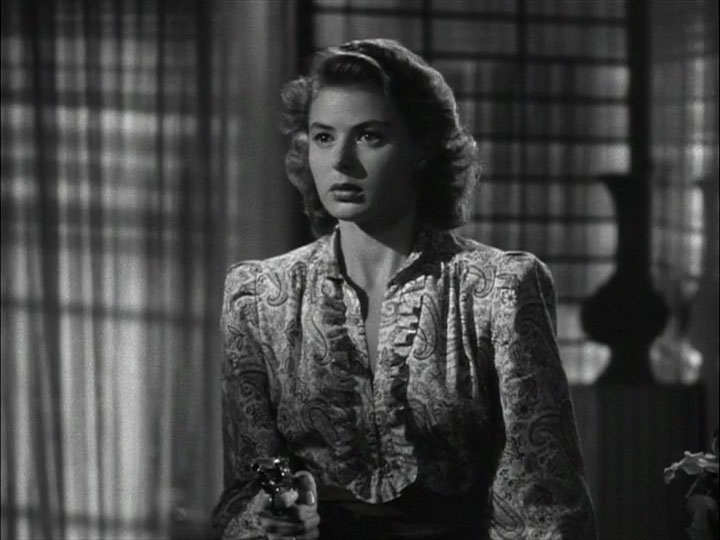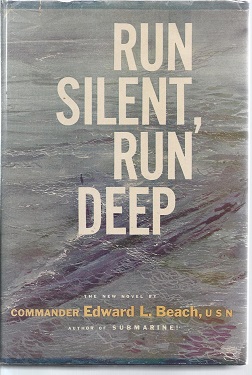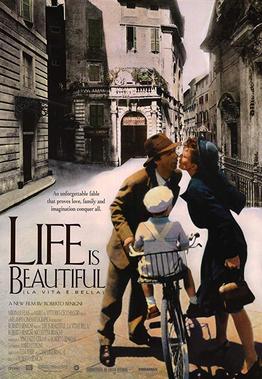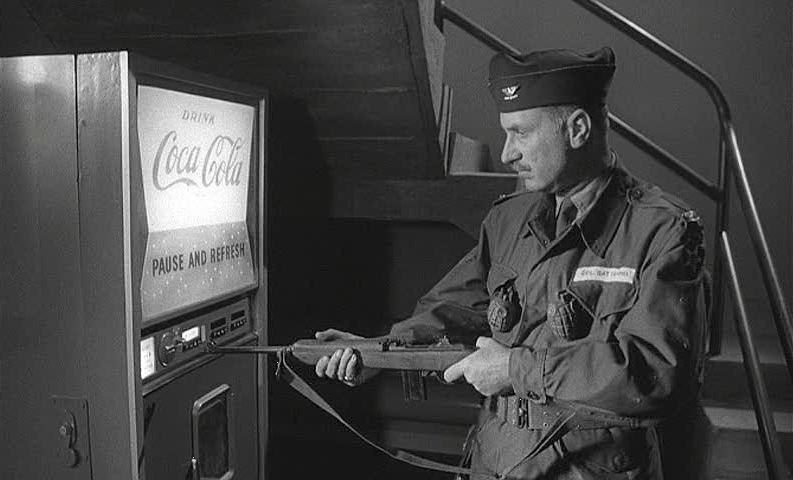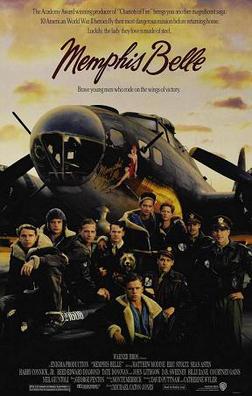SYNOPSIS: "Twelve O'Clock High" is an
aerial combat film centering on the American daylight bombing campaign of WWII
in Europe. The commander of a hard luck B-17 squadron is fired because he is
too sympathetic about the nearly suicidal demands made on his air crews. His
replacement (Gregory Peck) believes
tough discipline and success in bombing raids will build the morale of the
unit. It's rough going as the airmen react with a virtual mutiny.
BACK-STORY: “Twelve O’Clock High” is a war movie dedicated to American bomber crews and command in England in 1942. It is based on the novel by Sy Bartlett and Beirne Lay, Jr. It was made with the full cooperation of the Air Force which provided several B-17s and combat footage including from the Luftwaffe. The movie was a hit with the critics and won two Academy Awards (Jagger for Best Supporting Actor and Best Sound Recording) and was nominated for two others (Best Picture and Peck for Actor). It takes its name from the slang for enemy fighters being spotted above and straight ahead.
BACK-STORY: “Twelve O’Clock High” is a war movie dedicated to American bomber crews and command in England in 1942. It is based on the novel by Sy Bartlett and Beirne Lay, Jr. It was made with the full cooperation of the Air Force which provided several B-17s and combat footage including from the Luftwaffe. The movie was a hit with the critics and won two Academy Awards (Jagger for Best Supporting Actor and Best Sound Recording) and was nominated for two others (Best Picture and Peck for Actor). It takes its name from the slang for enemy fighters being spotted above and straight ahead.
TRIVIA: Classic Movie Hub, Guts
and Glory, Wikipedia, imdb
1. The term “twelve o’clock high” refers to the
position of German fighters. If you
imagine the bomber as the center of a clock, twelve o’clock would be directly
ahead and six o’clock is directly to the rear.
“High” refers to the position of the fighter relative to the bomber’s
elevation. So the title means the
attacker is in front of and above the bomber.
2. John Wayne turned down the role and many
other leading men were considered until Gregory Peck landed it. Peck was not originally interested because he
felt it was too much like “Command Decision”.
He changed his mind when he decided he wanted to work with director Henry
King. They made five more movies after
it.
3. The Robin Hood mug prop became a prized
possession of Frank Armstrong’s family.
It was stolen in a break-in and never recovered.
4. The book had a romantic subplot that was
removed to concentrate on the psychological impact of aerial bombing and the
pressures of command.
5. Maj. Joe Cobb was based on Paul Tibbetts, the
pilot of the Enola Gay.
6. The 918th Bombing Group was based
on the 306th which was the first bombing group to bomb Germany
(Wilhelmshaven). Frank Armstrong (the
Savage character) led the mission.
7. The release was postponed several months because
of the similarly themed “Command Decision”.
8. Stunt pilot Paul Mantz was paid the
astronomical sum of $4,500 for the belly-crash landing. The footage was reused in “The War Lover” and
“Midway”. Mantz was the premiere Hollywood stunt pilot and had performed more
than 90 crashes. For this one he rigged
up the controls so he could fly the plane alone.
9. The Air Force was very happy with the script
and suggested only three significant revisions.
It did not want Savage’s breakdown to be irrational and hysterical, so
the scene was changed to a more subtle slide into a comatose state. It asked that the drinking be toned down and
that the Chaplain observe a poker game instead of participating.
10. The USAF provided twelve obsolete B-17s from
its Air Service Rescue.
11. The movie was filmed in black and white to
seamlessly incorporate aerial footage.
12. The movie became required viewing at all the
service academies and for leadership seminars.
13. It won Oscars for Best Supporting Actor (Dean
Jagger) and Sound Recording. It was
nominated for Best Actor (Peck) and Picture (losing to “All the King’s Men”).
14. The movie has no score backing the scenes.
Belle and Blade = 5.0
Brassey’s = 4.0
Video Hound = 4.4
War Movies =
5.0
Military History = #72
Channel 4 = not on list
Film Site = yes
101 War Movies = no
OPINION: “Twelve O’Clock
High” is a classic war film. It does not
have much action, but it is very well written and acted. The cast is great and Peck gives one of his
best performances. It has a depth to it
that you rarely see in a black and white WWII movie. It covers the stress of the air bombardment
of Germany and even rolls into PTSD. It
is thought-provoking as it covers different styles of command. It is not surprising that it was used for teaching
leadership. I feel it should be ranked
much higher.

